The Characteristics of Mini-LED and Blooming Issues
Allion Labs / Abel Hsu
Mini-LED
Nowadays, display technology has been constantly improving. Although CRT, LCD, and OLED are all display technologies, they have very different capabilities. For example, LCD stands for liquid-crystal display screen. Currently, mainstream LCD technology utilizes TFT. The color filters inside produce different changes in color. For TFT-LCD to work, it needs to use a set of light sources as a backlight, usually LED. LED technology can be categorized into white LED and RGB LED.
Currently, there are two types of display technology based on LED, namely Mini-LED and Micro-LED. The difference is in the size of the LED crystal. In this article, we’ll discuss more in-depth about Mini-LED. Mini-LED is also known as a sub-millimeter light-emitting diode, referring to LED lights with a 100㎛ (micron) LED crystal. On the other hand, Micro-LED is also known as a micro light-emitting diode, referring to LED lights with a 10㎛ LED crystal. Micro-LED is a relatively new technology that’s still under development, so we will not discuss it in this article.
Local Dimming on Mini-LED
Due to the yield rate of Mini-LED being higher than Micro-LED, mass production of Mini-LED is relatively easier. Compared with traditional LED displays, Mini-LED allows for more crystals to be placed on a display. The contents of the display can look more detailed because light emission components are more densely packed. Another advantage of Mini-LED is that it supports local dimming.
Local dimming technology is commonly used on OLED displays. Controlling the brightness in different zones of the display makes areas that need contrast more visible. This allows for HDR functionality to achieve better results. Because Mini-LED supports local dimming, it looks extremely similar to an OLED HDR display.
Blooming
Blooming refers to light spilling onto darker parts of the display, causing brighter objects to appear to have a “halo” around them. For traditional displays that don’t support local dimming, this phenomenon is less likely to occur. But for displays that do support local dimming, this phenomenon is more likely to occur because the backlight can vary according to the contents of the display. Blooming easily happens when contrasting differences in brightness are displayed. The object in the display will seem to have a halo around it like a star in the night sky.
In the figure below, we showed a white block on the screen and covered it with a black card so the blooming effect can be seen more clearly.
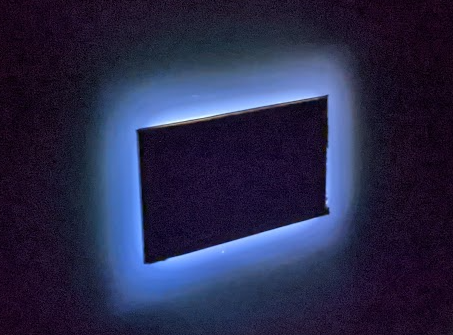
Blooming Analysis
Here, we attempt to quantify the blooming effect with an experiment. We used a computer with a Mini-LED display panel and used a center white pattern test chart to test this phenomenon under its highest brightness. Please refer to the figure below to see our analysis of the measurement position. To quantify the measurement data, the distance must be defined. The range of the spilled light is quite small, so we locked the edge of the block, defined 5 distances, and conducted the experiments for each direction. The brightness of the block was measured at 340 nits and the brightness of the outer frame was measured at 0.00210 nits.
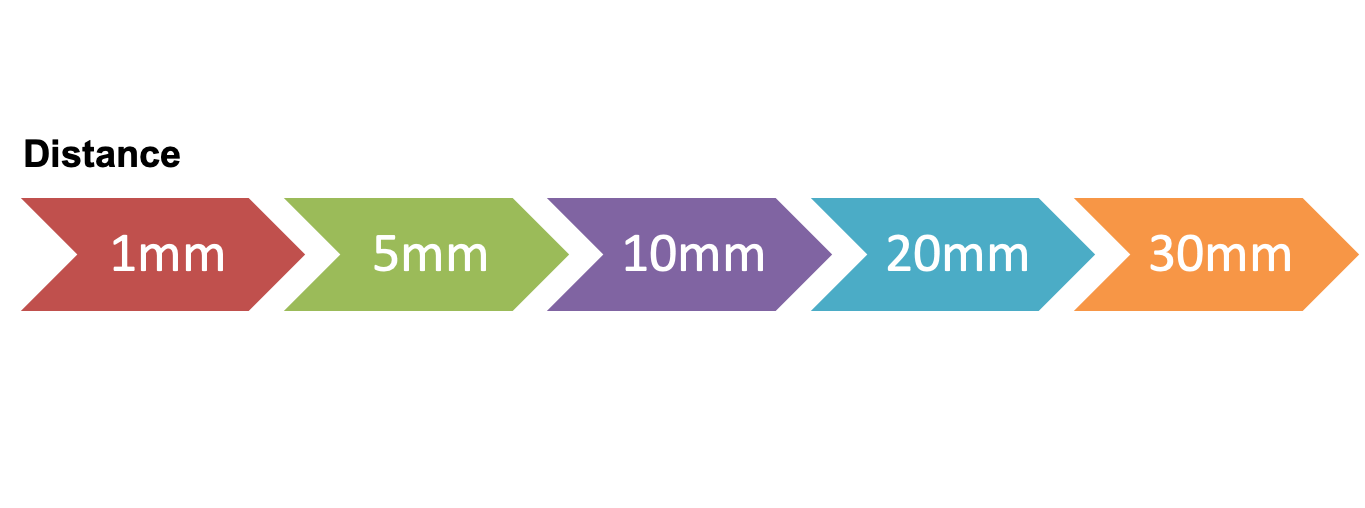
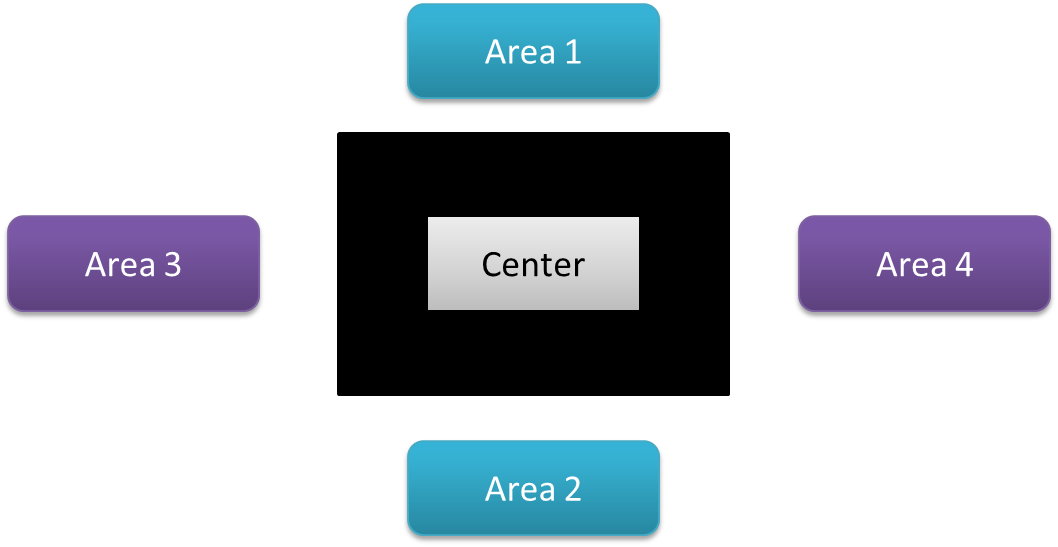
To prevent the brightest parts of the display from affecting our measurements, we needed to use an opaque object and align it with the edge of the block. Due to the blooming effect being very small, it was necessary to use a measurement plate marked with distance points to correctly measure the results. Our main measurement tool was the Konica-Minolta CS-2000A Spectroradiometer, a designated tool for VESA HDR certification. It’s capable of measuring brightness levels as low as 0.0005 cd/m², perfect for this blooming experiment. We used a sliding rail to move the measuring tool, effectively controlling it to the correct measurement points.
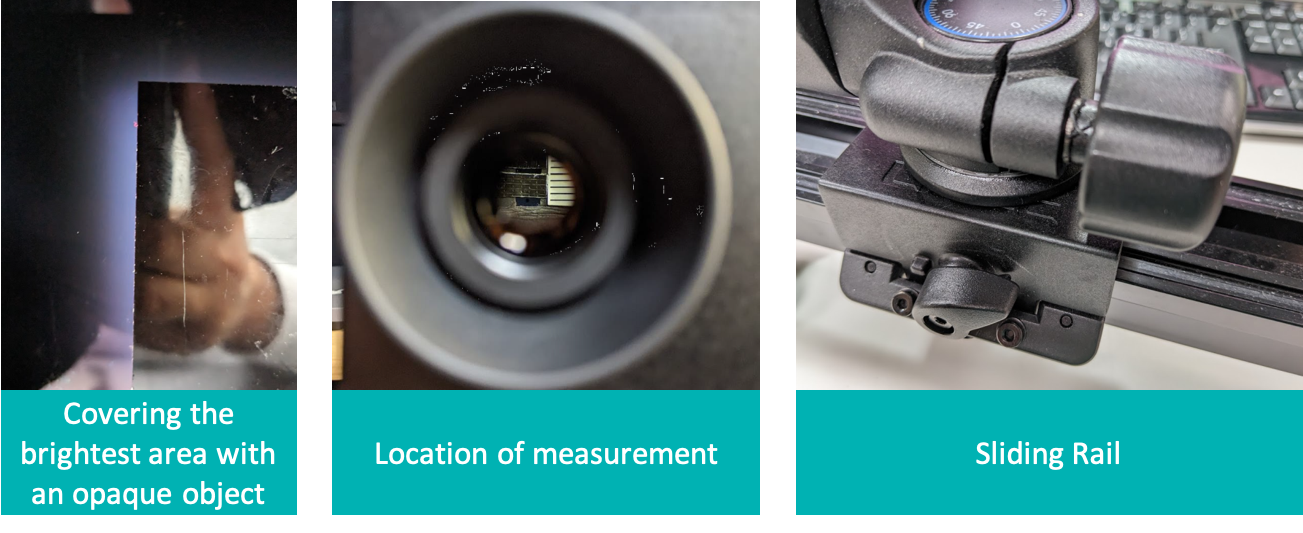
Test Results
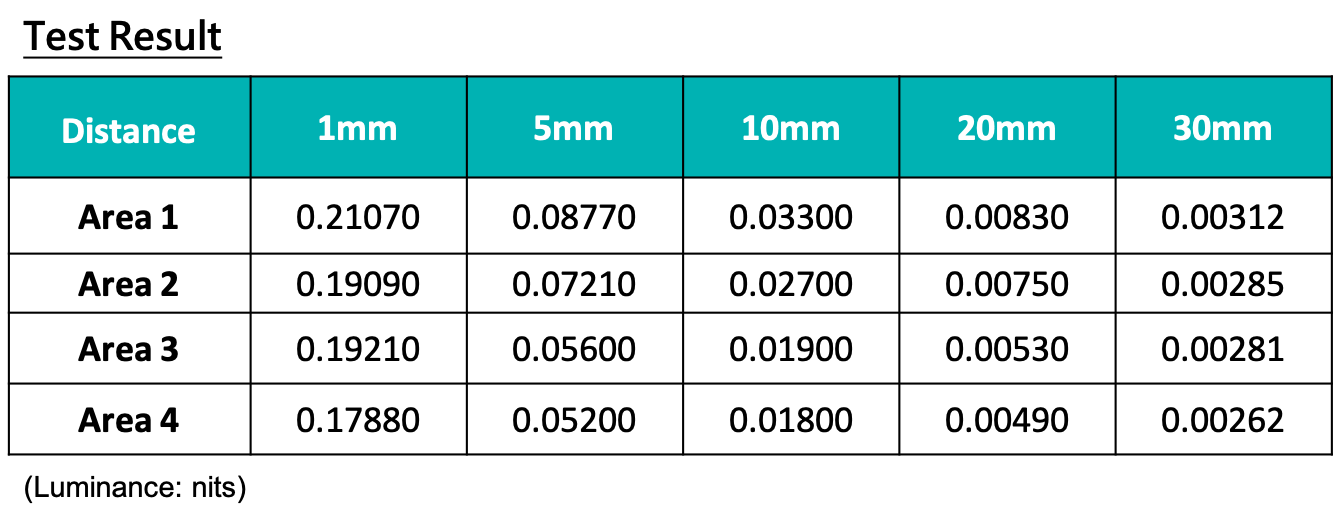
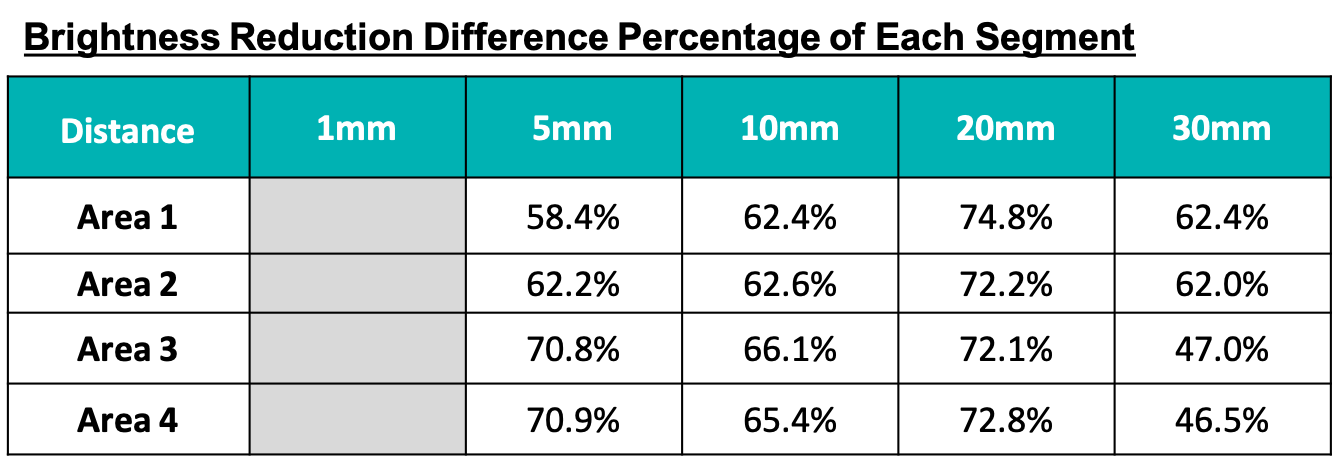
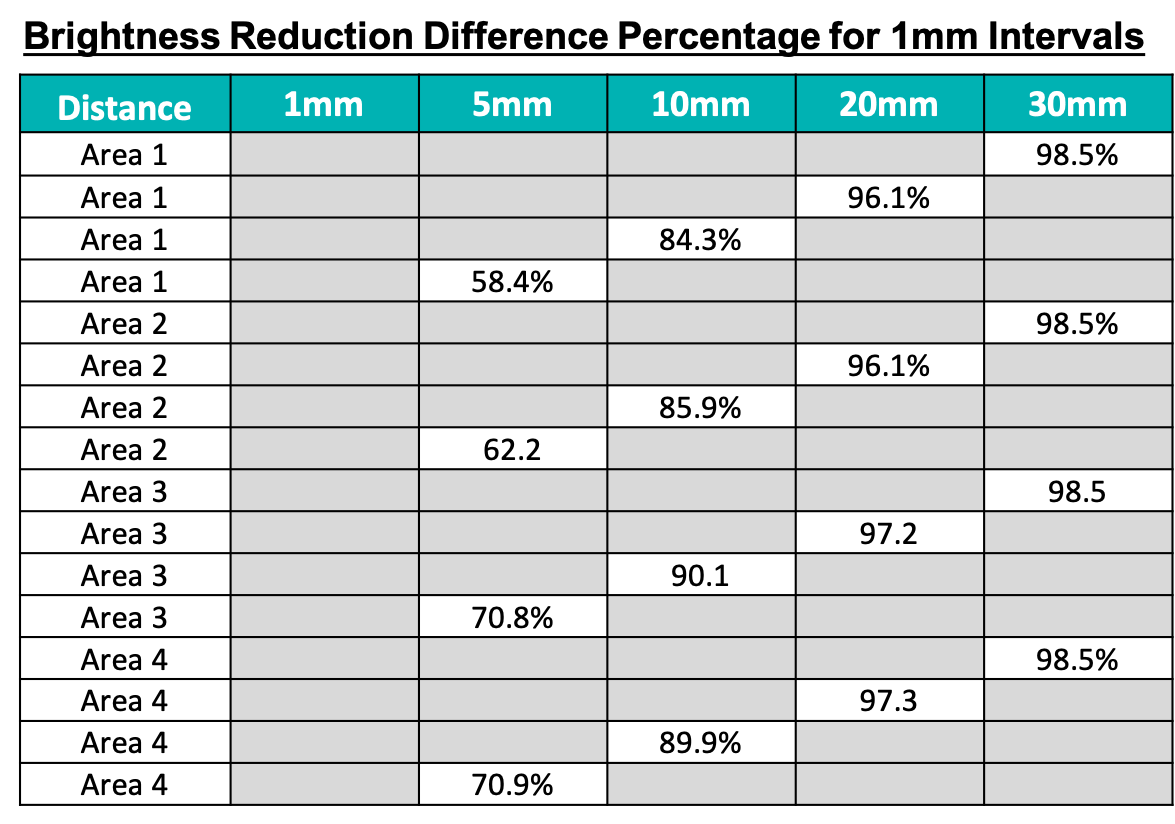
As we can see from the data tables above, the brightness at 1mm from the middle was about 0.20 nits. This brightness is almost the same as the darkest black in traditional LED displays. The brightness of the next distance at 5mm has dropped two decimal places, which is a value that cannot be achieved with a traditional LED display panel. At 20mm, it’s already at three decimal places.
With the analysis of the difference percentage, the brightness of the different distance intervals drop by around 50% to 60%, indicating that the blooming phenomenon has a significant decrease in brightness data due to more distance from the middle. The brightness difference in the 1mm area is where blooming is most obvious. As seen in the table above, 10mm only has 10% to 15% of the brightness of 1mm. The blooming phenomenon significantly reduces after 10mm and beyond, meaning that the light control capabilities of Mini-LED panels are quite good.
Conclusion
It’s not easy to see blooming in HDR videos. We used high-contrast images to observe this phenomenon. After blocking the brightest parts, we still see light spillage around it. We found that brighter objects tend to have more obvious blooming.
Image of Street Light With Blooming Effect

Although blooming exists, the overall viewing experience is still improved by utilizing local dimming technology and HDR content can look amazing. Based on the measurement data above, the brightness levels around 5mm and 10mm are still very low compared to traditional LED displays. The 20mm area has three decimal places, meaning that the blooming is still controlled within a certain range and it can be said that there is no light spillage after 30mm.
Through these experiments, we can define that the brightness value of 10mm must be a lower number than two decimal places. If the brightness affected by light spillage at 10mm cannot be a value lower than two decimal places, then it would be the same as a traditional LED backlight, not being able to utilize the advantages of local dimming technology.

































